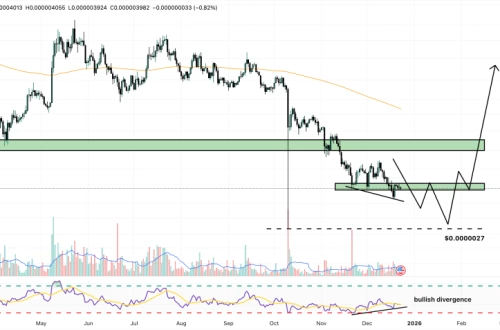Best Crypto for Yield Farming for Beginners
Summary:
Yield farming is a popular DeFi strategy that allows users to earn passive income by staking or lending cryptocurrencies. For beginners, selecting the right crypto is crucial to minimize risks while maximizing rewards. This article explores beginner-friendly yield farming options, including stablecoins like USDC, blue-chip tokens like Ethereum, and DeFi-focused assets like AAVE. Understanding risk management, liquidity provision, and basic yield farming mechanics is essential for newcomers to navigate this space successfully.
What This Means for You:
- Safety first with stablecoins: Yield farming with stablecoins like USDC or DAI reduces volatility risks, making them ideal for beginners.
- Start small with liquidity pools: Platforms like Uniswap or PancakeSwap allow users to deposit crypto pairs (e.g., ETH/USDC) to earn rewards while learning the ropes.
- Research APY and impermanent loss: Higher yields may come with greater risks. Educate yourself on how APY fluctuations and impermanent loss can impact returns.
- Future outlook or warning: Yield farming can be lucrative but requires vigilance against smart contract vulnerabilities, platform insolvencies, and regulatory uncertainty. Diversify investments and avoid overexposure.
Explained: Best Crypto for Yield Farming for Beginners
What Is Yield Farming?
Yield farming involves depositing cryptocurrency into DeFi protocols to earn interest or rewards, typically in native tokens or transaction fees. Beginners should prioritize user-friendly platforms and well-established cryptocurrencies.
Best Crypto Options for Beginners:
1. Stablecoins (USDC, DAI, USDT)
Stablecoins are pegged to fiat currencies (e.g., the US dollar), reducing volatility while offering decent yields.
- Pros: Lower risk, predictable returns.
- Cons: Lower APY compared to volatile tokens.
2. Ethereum (ETH)
ETH is widely accepted across lending platforms like AAVE and staking protocols like Lido Finance.
3. Binance Coin (BNB)
Yield farming on Binance Smart Chain (BSC) provides lower transaction fees compared to Ethereum.
- Pros: Fast transactions, lower costs.
- Cons: Centralization concerns.
4. Polygon (MATIC)
MATIC is ideal for Ethereum Layer 2 yield farming, minimizing gas fees.
- Pros: Cheap transactions, interoperable.
- Cons: Less decentralized than Ethereum mainnet.
Getting Started with Yield Farming:
- Choose a beginner-friendly DeFi platform (e.g., AAVE, Curve Finance, PancakeSwap).
- Deposit capital into a liquidity pool.
- Monitor rewards and reinvest where applicable.
Risks to Consider:
- Smart contract hacks: Vulnerabilities can lead to fund losses.
- Impermanent loss: Occurs when pooled token prices fluctuate.
- Regulatory concerns: Some jurisdictions impose restrictions on yield farming.
People Also Ask About:
- Is yield farming safe for beginners? Yield farming carries risks but sticking to stablecoins and reputable platforms enhances safety.
- Which crypto has the highest yield for farming? Riskier tokens may offer higher APYs, but stablecoins are more reliable for beginners.
- How much do I need to start yield farming? Starting with $100-$500 is feasible for beginners.
- What is impermanent loss? Temporary losses occur when pooled tokens diverge in value before withdrawal.
- Which blockchain is best for yield farming? Ethereum and Binance Smart Chain lead, but Polygon is a cheaper alternative.
Expert Opinion:
Experts recommend beginners start yield farming with stablecoins or established tokens like ETH and BNB before exploring higher-risk assets. Staying updated on DeFi protocol audits and APY trends ensures informed decision-making.
Extra Information:
- CoinGecko – Track yield farming data and token prices.
- DeFi Llama – Compare DeFi protocols and APYs.
Related Key Terms:
- Best stablecoin yield farming for beginners
- High APY crypto farms for newbies
- Yield farming beginners guide 2024
- Ethereum vs Binance Smart Chain yield farming
- How does impermanent loss work?
#Crypto #Yield #Farming #Beginners #Guide #HighYield #Strategies
Featured image generated by Dall-E 3





